Students will learn about repetitive patterns then draw or stamp some of their own around their initials. Recommended for Kindergarten.
Pattern: a principle of design; the repetition of the elements of visual arts in an organized way.
Shape: an element of visual arts; a two-dimensional (flat) area enclosed by a line.
- Geometric: shapes and/or forms that are based on mathematical principles, such as a square, rectangle, circle or triangle.
- Organic: shapes and/or forms that are irregular, often curving or rounded, based on natural forms.
Negative Space: the empty space surrounding a shape, figure, or form in a two- or three-dimensional artwork.
Repetition: the repeated use of elements of visual arts to create a pattern, movement, or unity.
Prior to class, collect a list of the student’s initials from the teacher. The student’s first, middle, and last initial will be needed for this project.
Prior to class, use a pencil to create a base for each student: Write their first name in pencil on the back. When drawing their initials, extend each initial from the top edge to bottom edge of the page. The initials are the positive space and the space left blank is the negative space. It is important that the initials extend to the edges of the paper to create as many unique negative spaces as possible.
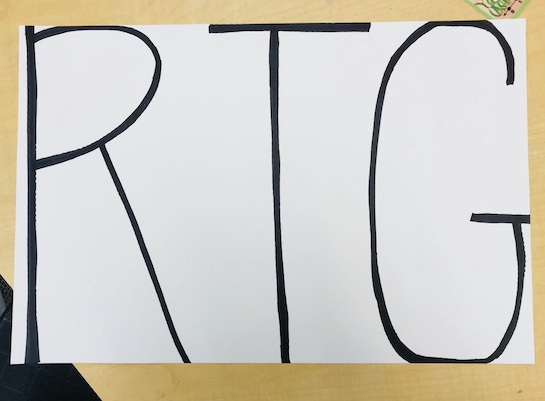
Kindergarteners learn about pattern in their curriculum.They should be familiar with repetition and with A,B and also A,B,C patterns. Check with your teacher to find out how complex a pattern the class can handle.
Students can recognize a pattern in a work of art and can predict a sequence within a pattern
Students will fill in each closed-shaped section of negative space with a different pattern, using markers.
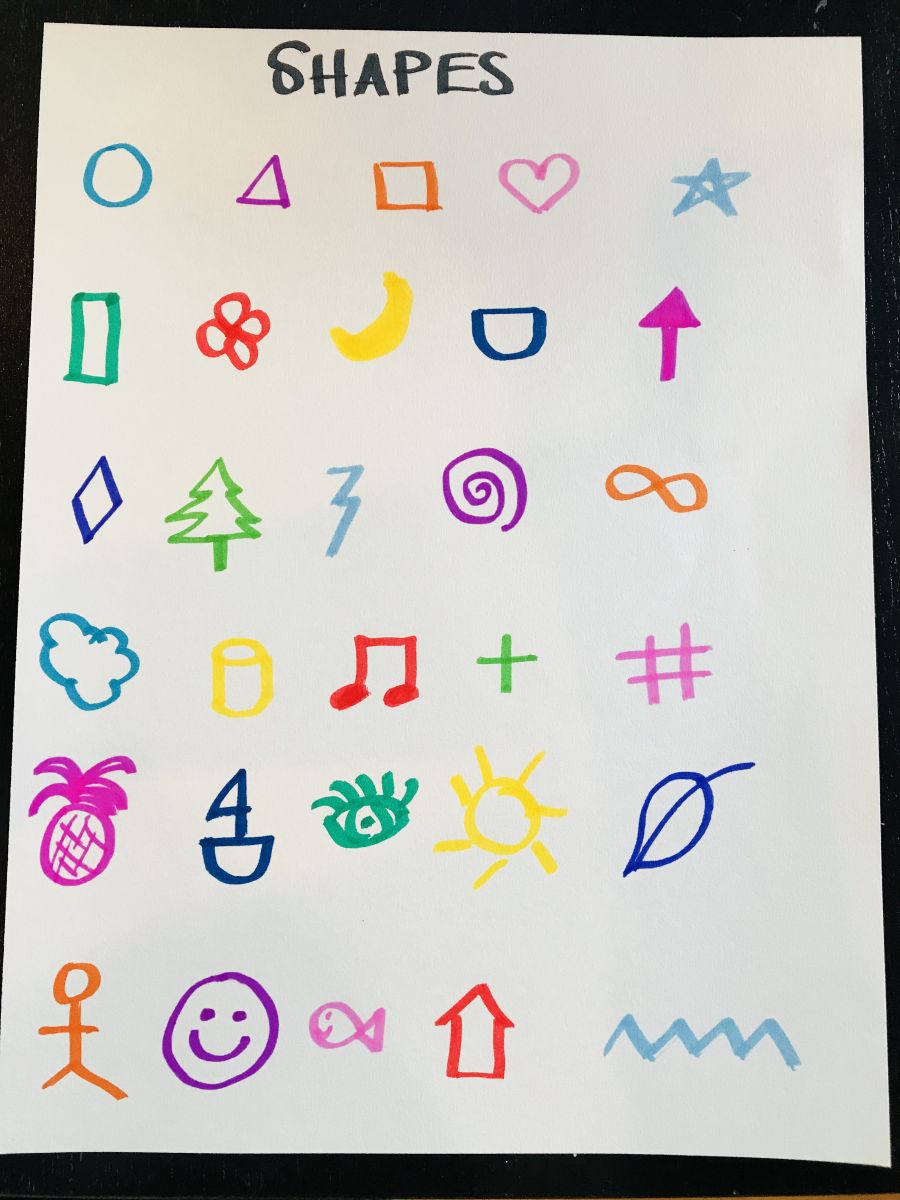
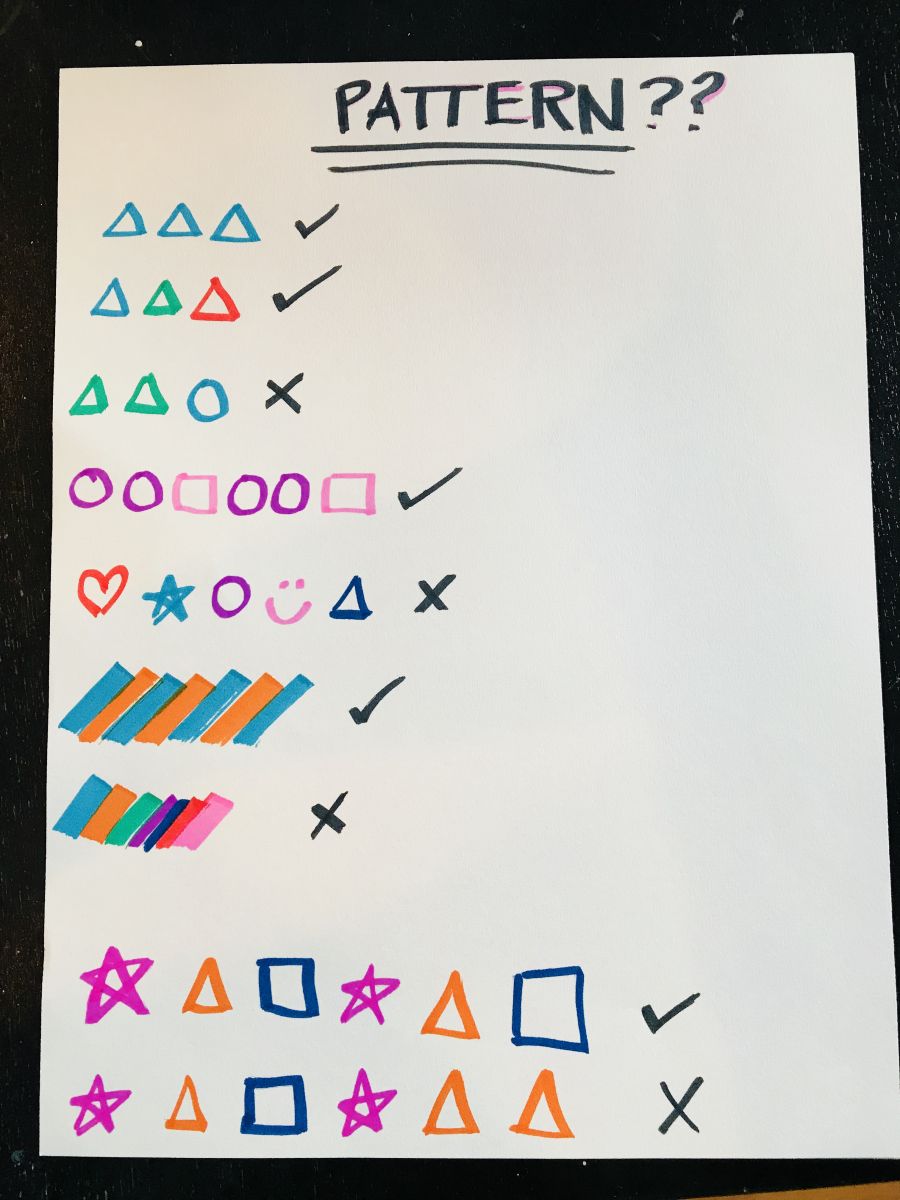
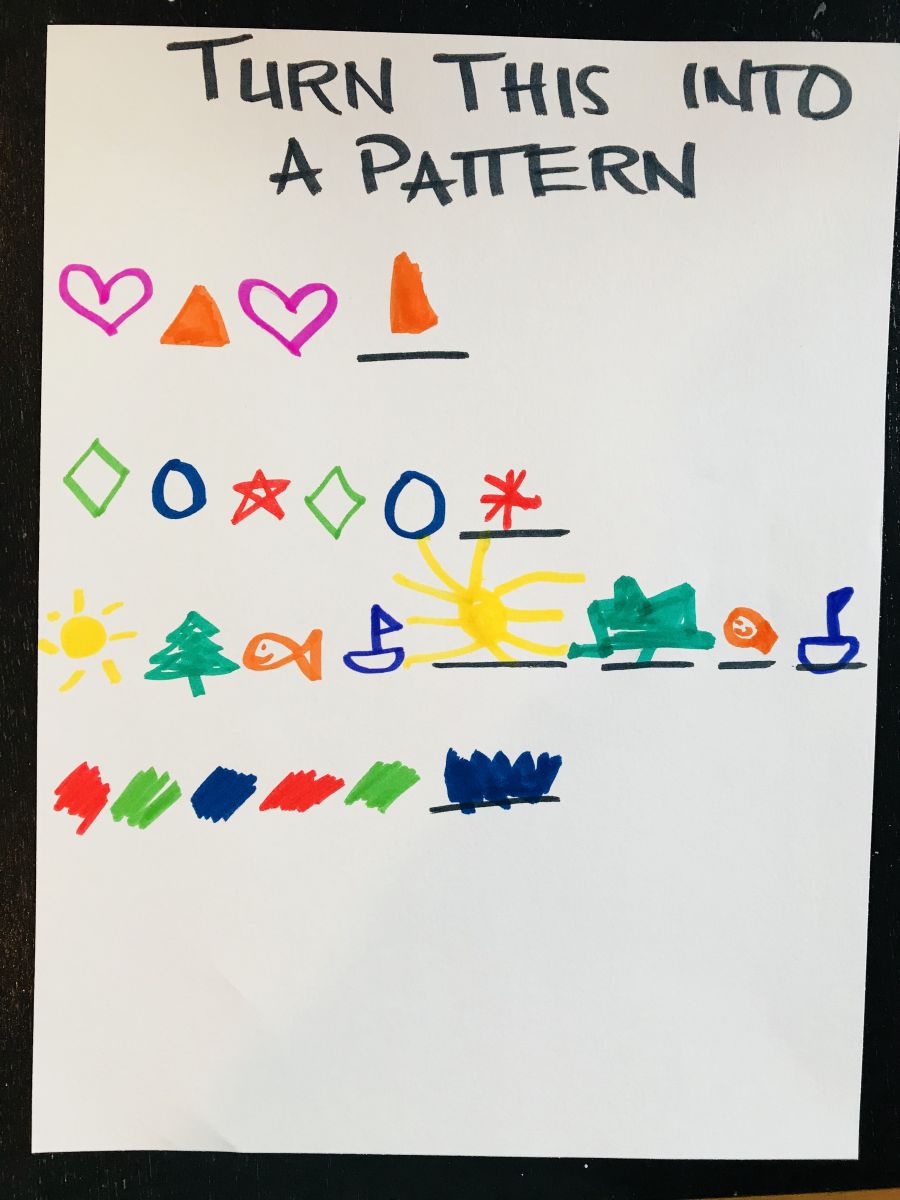
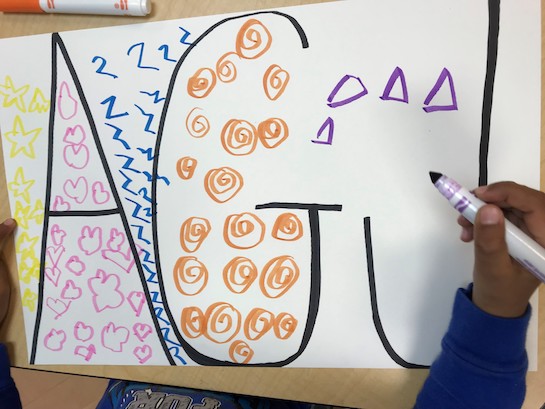
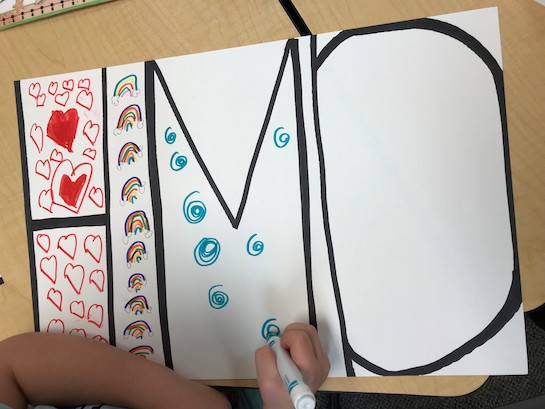
Laurelle Graves and the Kindergarten students of Ms. Faddis’s class at Apollo Elementary.
21st Century Thinking Skills
Creating, taking responsible risks, observing, making connections, visualizing, sequencing, determining main idea and problem solving.
WA State Learning Standards
(VA:Cr1.1.K) a. Engage in exploration and imaginative play with materials.
(VA:Cr1.2.K) a. Engage collaboratively in creative art-making in response to an artistic problem.
(VA:Cr2.1.K) a. Through experimentation, build skills in various media and approaches to art-making.
(VA:Cr3.1.K) a. Explain the process of making art while creating.
(VA:Re7.2.K) a. Describe what an image represents.
(VA:Re8.1.K) a. Interpret art by identifying subject matter and describing relevant details.
Arts Integration Opportunities
Docents can assign a meaning to a shape or color to expand the symbolic nature of art i.e. if a letter can represent a name, a circle might mean calmness, a triangle: playful, a square: hardworking etc. Students can choose a shape that describes the artist's personality.
Please note: These lesson plans are intended for non-profit use only. Use of these plans for commercial purposes should give attribution to the Issaquah Schools Foundation and be accompanied by a nominal donation at www.isfdn.org/donate. Thank you.
Fueling Success for Every Student, Every School